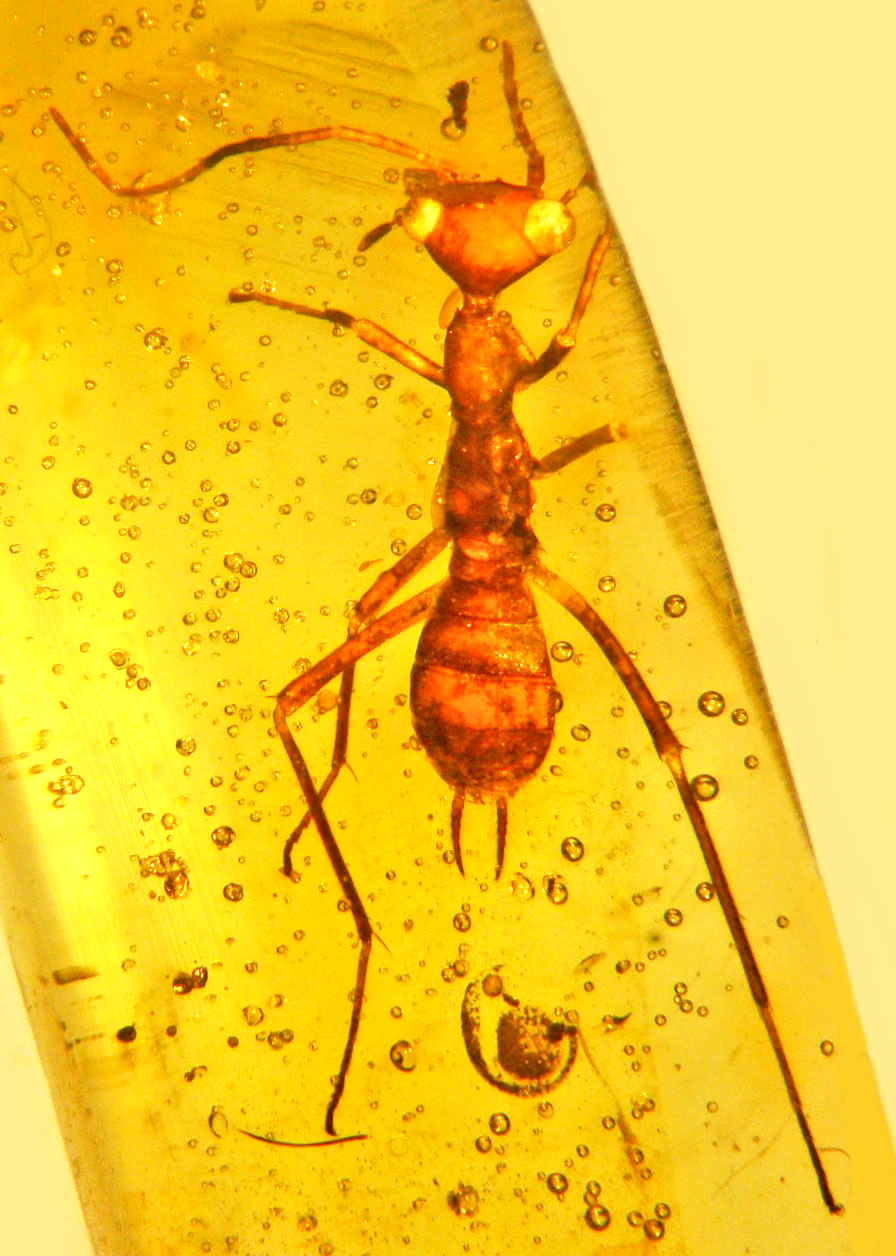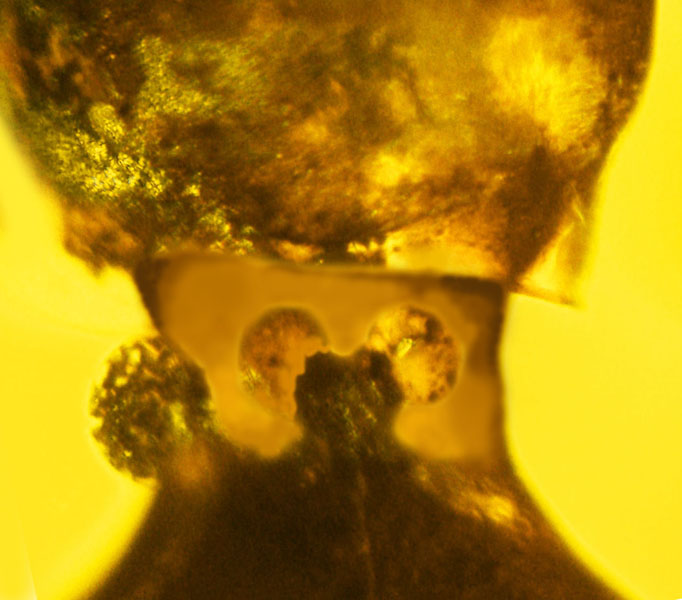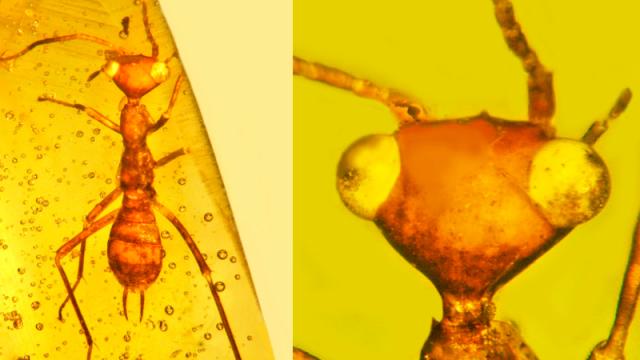Say hello to Aethiocarenus burmanicus, an ancient insect so strange — and so godawfully ugly — its discoverers had to create an entirely new scientific classification to catalogue it.
Introducing Aethiocarenus burmanicus. (Image: George Poinar, Jr.)
Well, they can’t all be pretty. Sadly for this specimen, its ugly mug has been preserved in Burmese amber for posterity. As described in the latest edition of Cretaceous Research, this alien-like creature (kinda looks like E.T., no?) lived 100 million years ago in what is now Myanmar. The specimen, discovered by miners in the Hukawng Valley, features some characteristics never seen before in an insect, including a triangular head, a pair of weirdly positioned googly eyes and glands on its neck.

Image: George Poinar, Jr.
“I had never really seen anything like it,” said George Poinar, Jr, a palaeontologist at Oregon State University and a co-author of the new paper, in a statement. “It appears to be unique in the insect world, and after considerable discussion we decided it had to take its place in a new order.”
That doesn’t happen very often. There are approximately one million known species of insects in the world (both past and present), and all of them fit rather nicely into one of 31 existing orders. An order is how scientists classify families of insects. The order of Coleoptera — more commonly known as beetles — includes thousands of known species. Other orders include Diptera (mosquitoes) and Hymenoptera (bees and ants). But this freaky bug gets an entirely new order to call its own — the newly minted Aethiocarenodea.

The most unusual thing about A. burmanicus is its triangle-shaped head, with the bottom vertex located at the base of the neck. This is different from any other known insect, and it would have allowed the species to see almost 180 degrees when it turned its head sideways. This means A. burmanicus could have literally seen things — such as predators — behind itself.
The researchers suspect that this tiny, wingless insect lived in fissures in the bark of trees, hunting for mites, worms or fungi. It would have been able to move quickly using its long body and slender legs. To repel predators, it used glands on its neck to secrete a noxious chemical deposit.
This creature eventually became extinct, its unique features no longer suited to changes in its environment. Which is just as well. This ancient bug is too damn ugly to keep existing.
